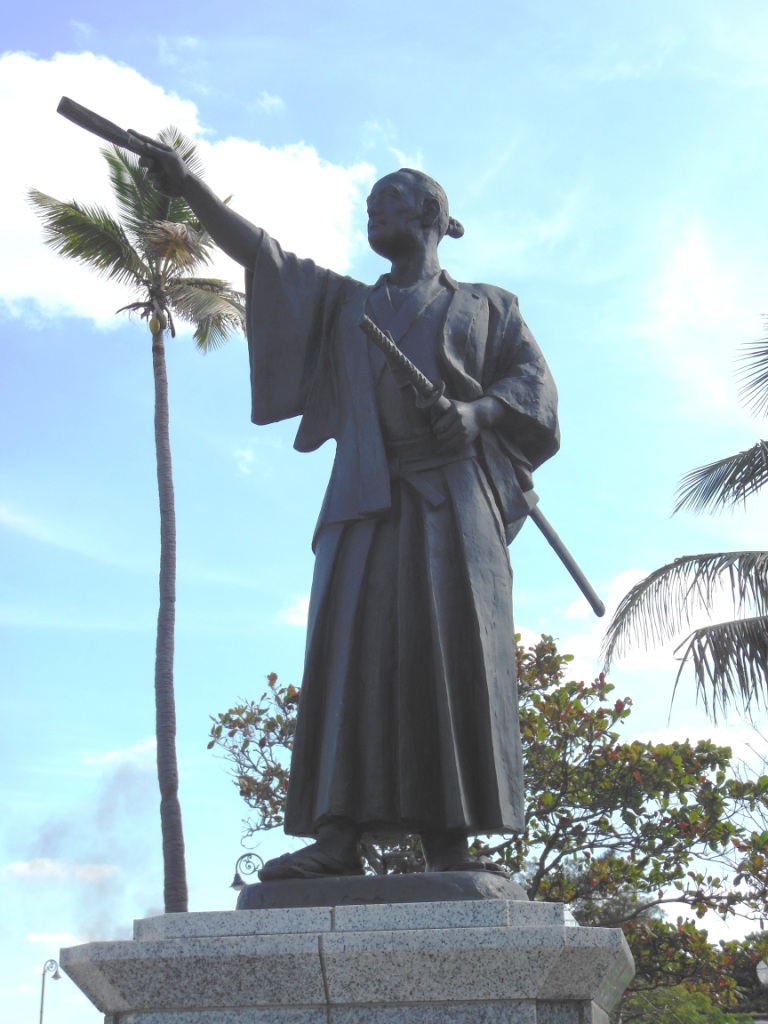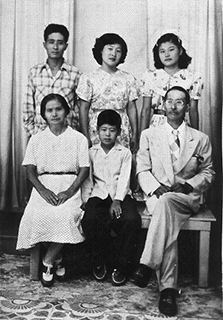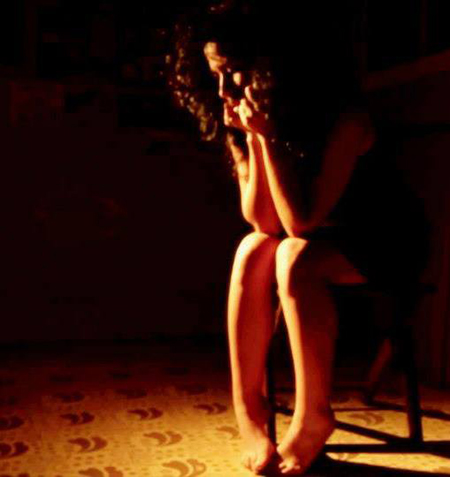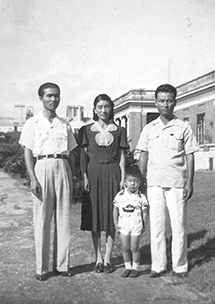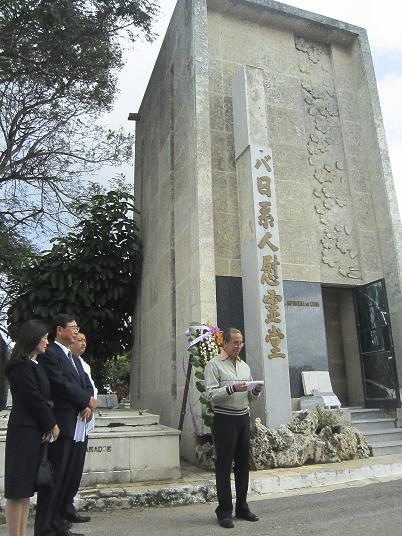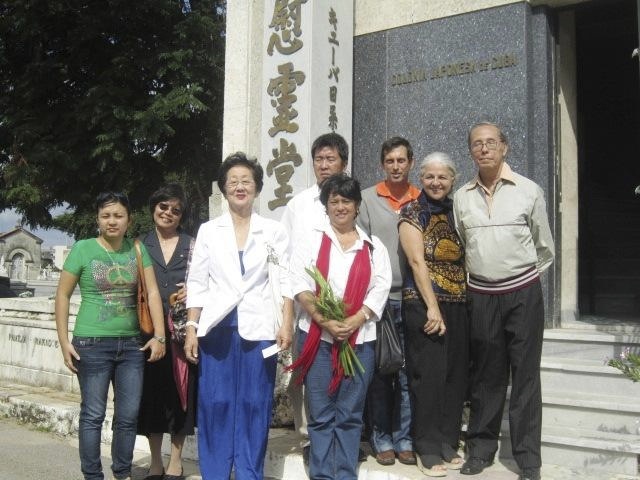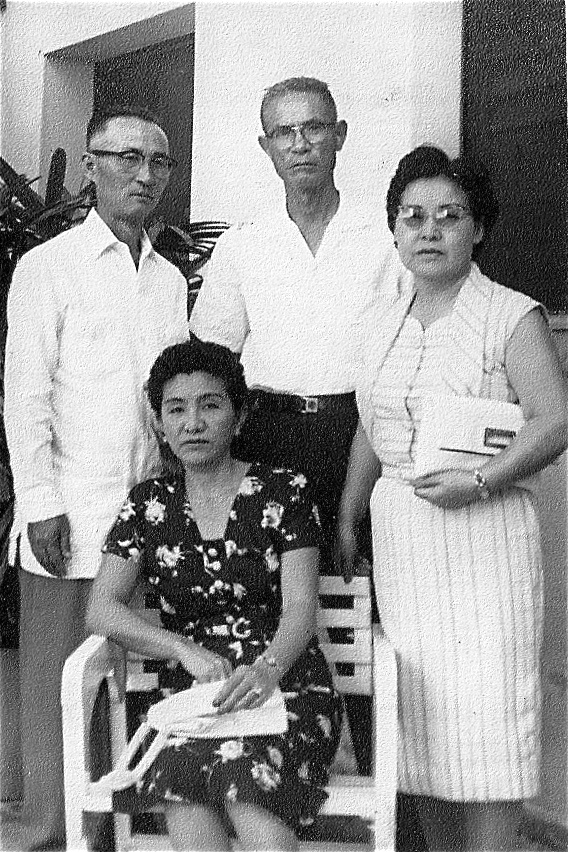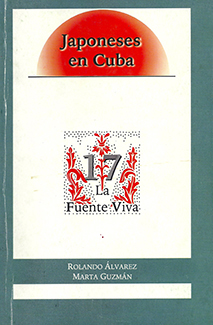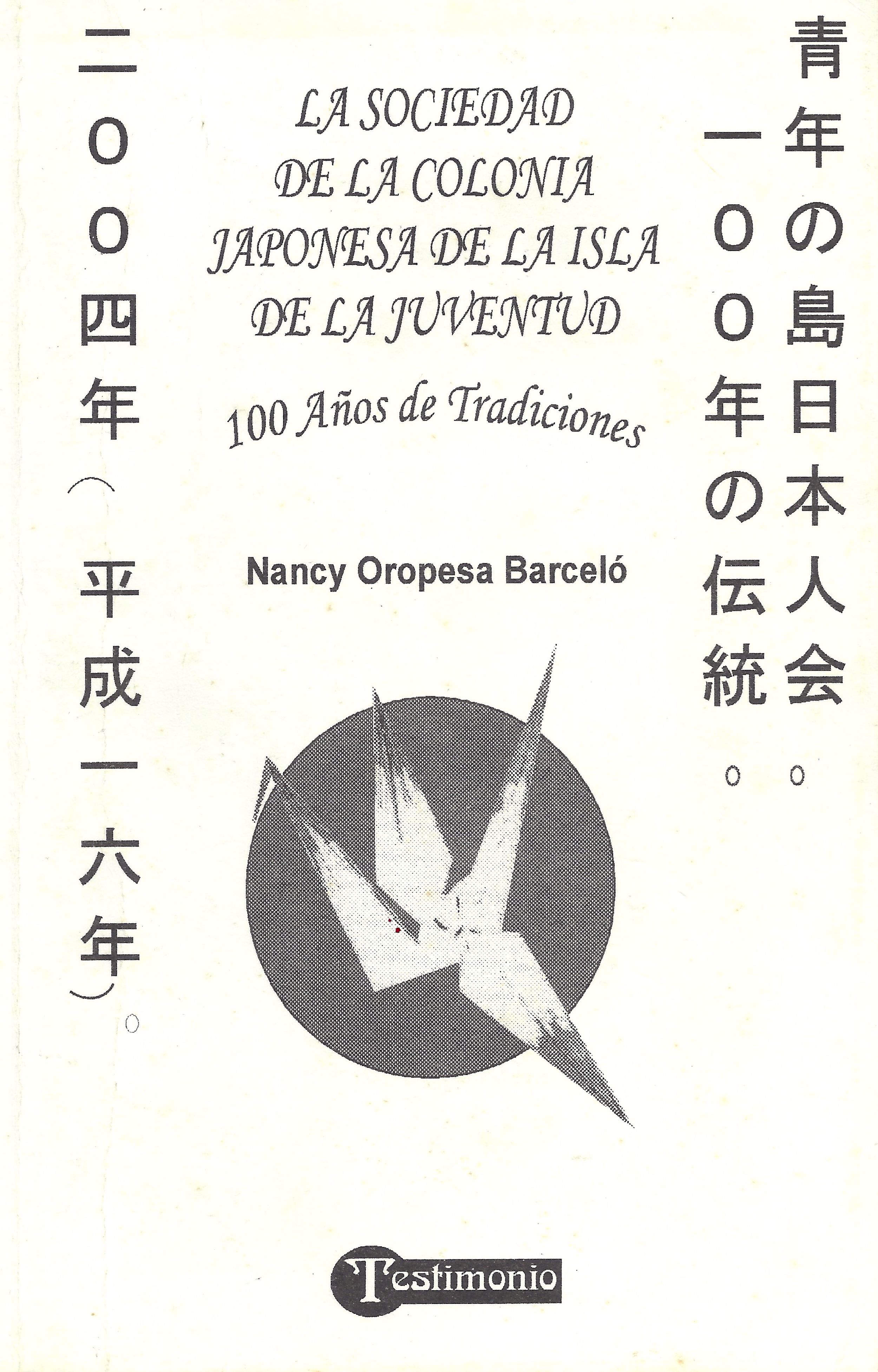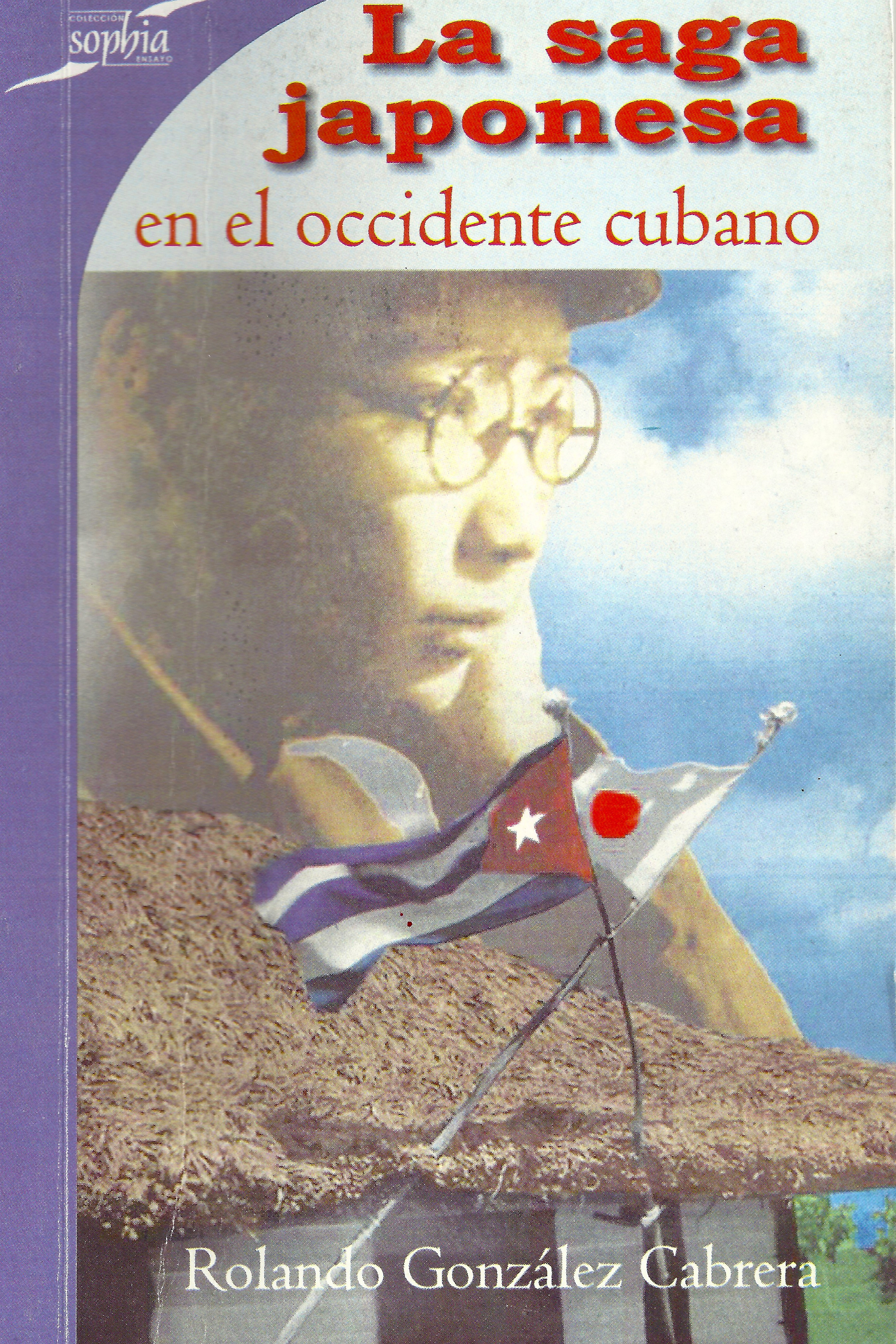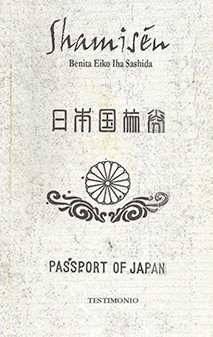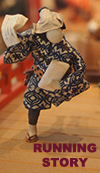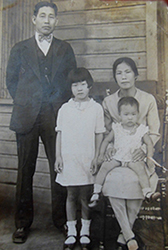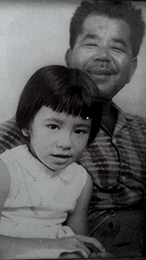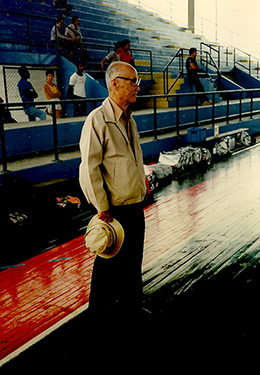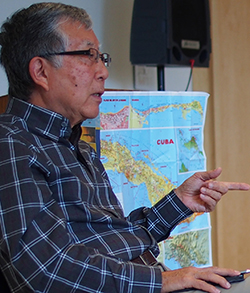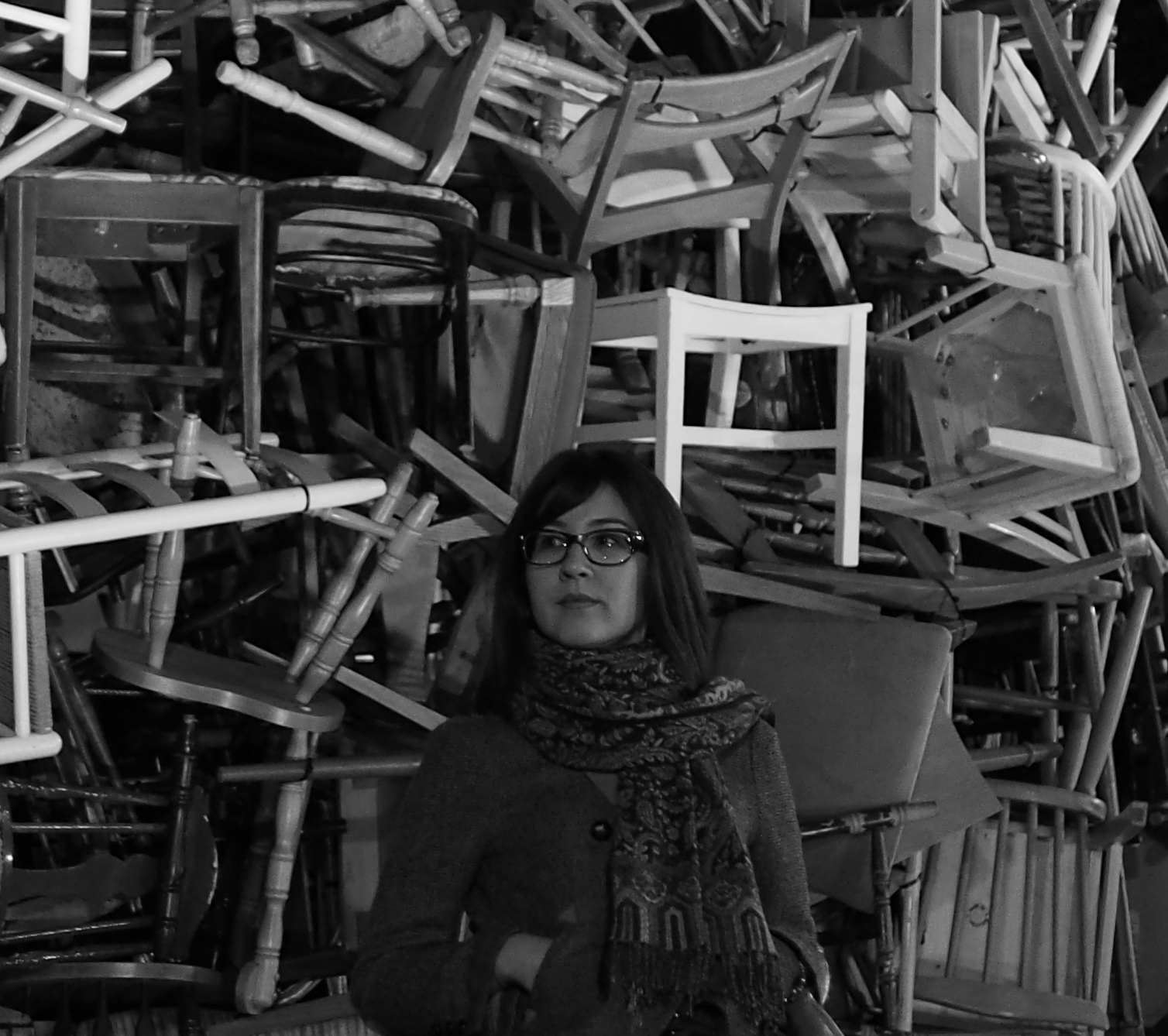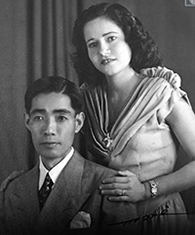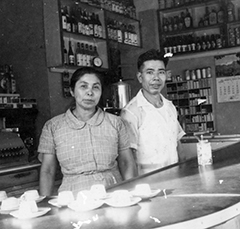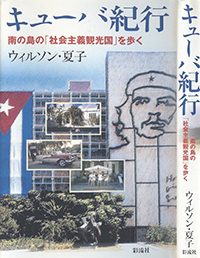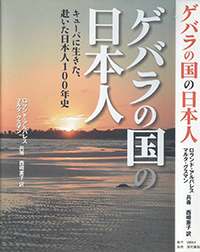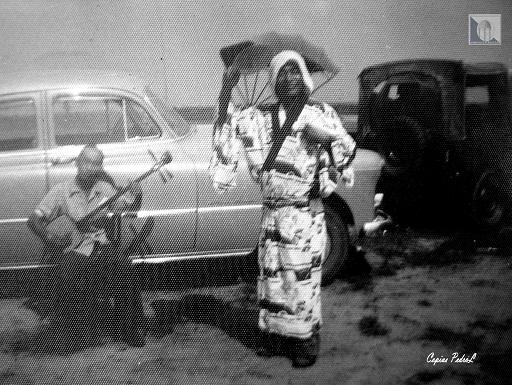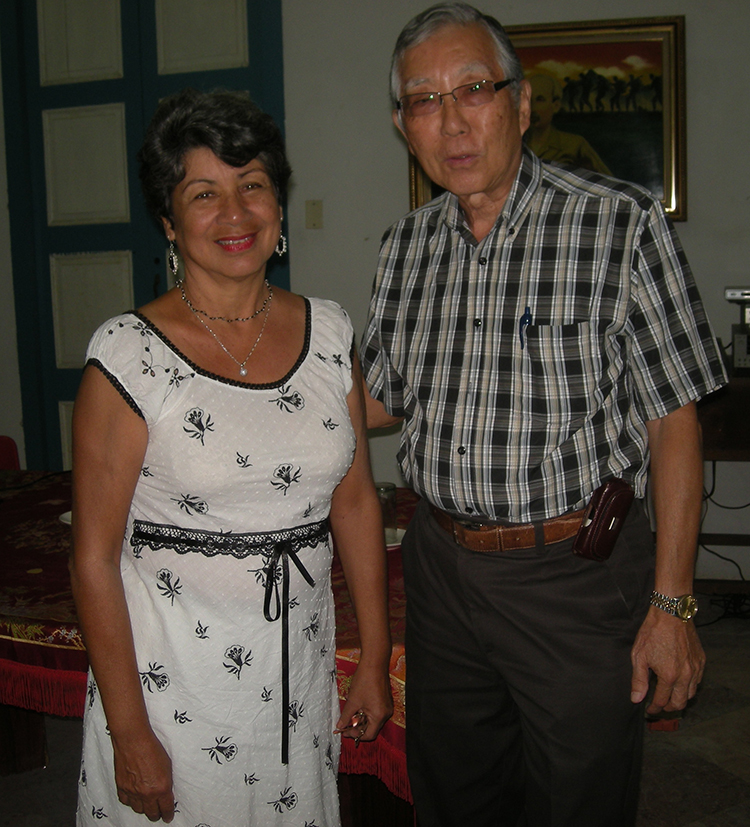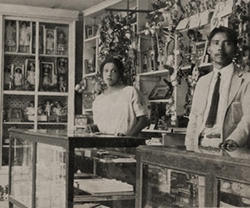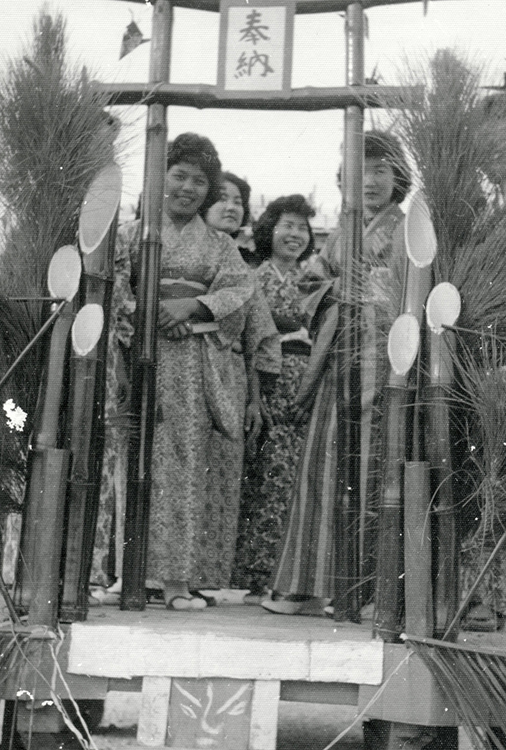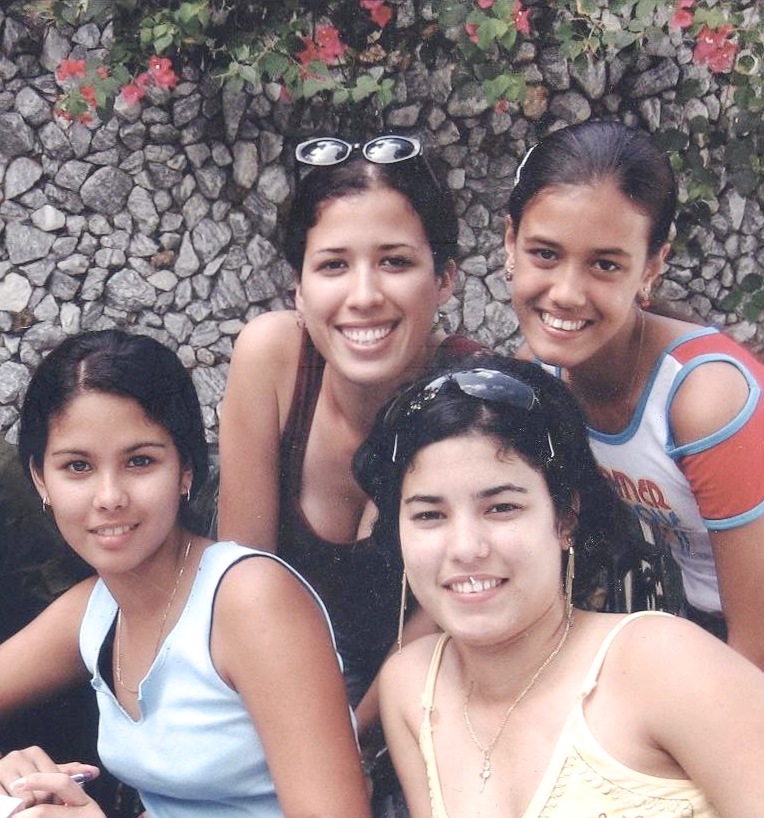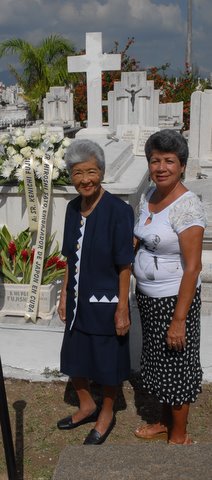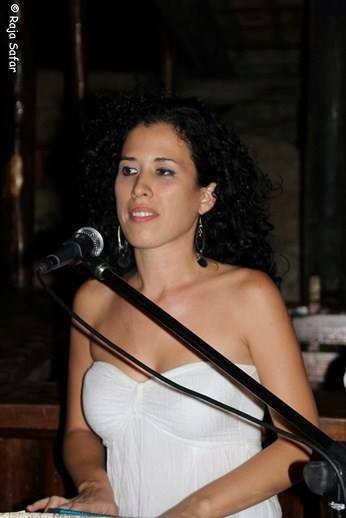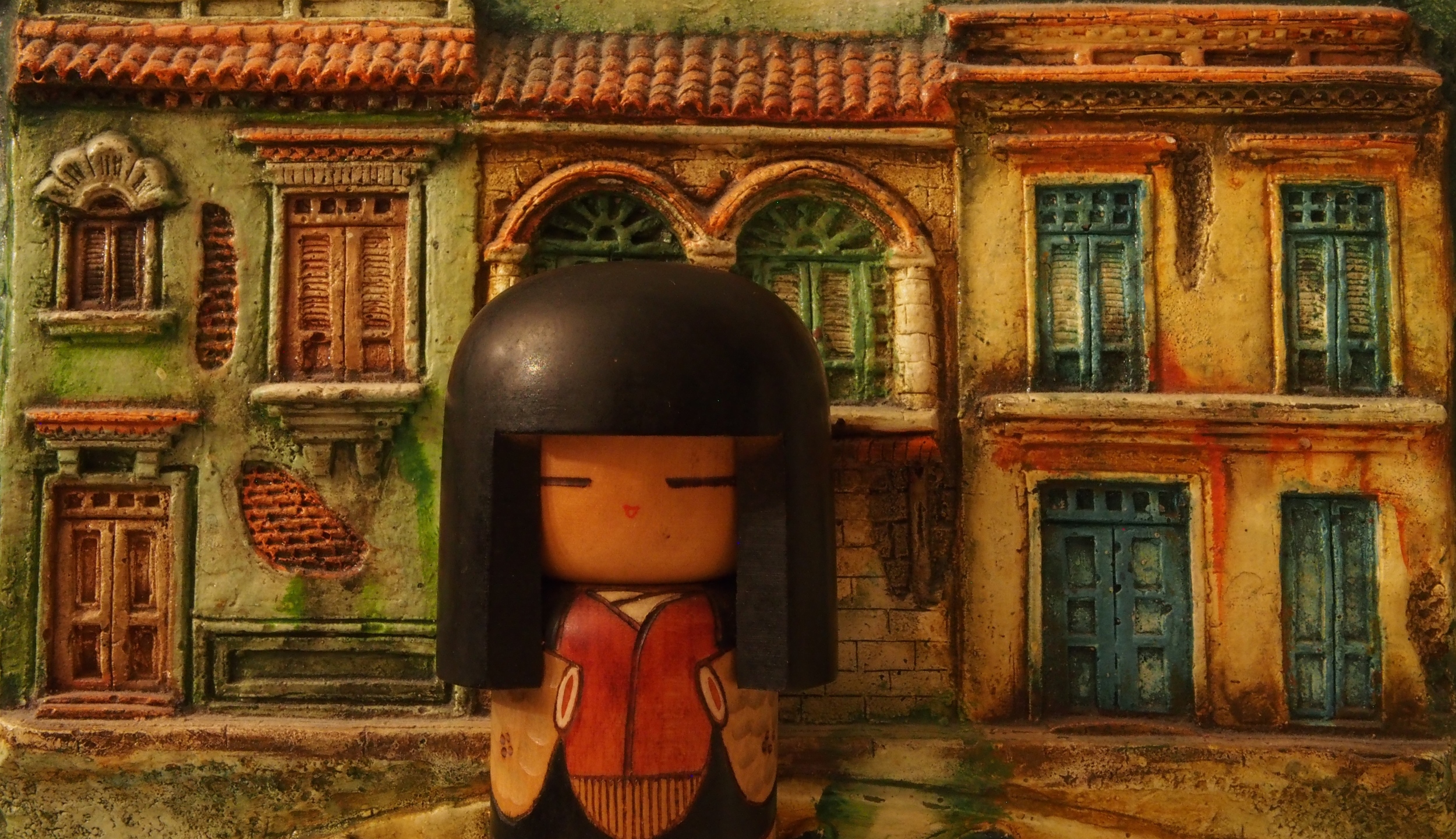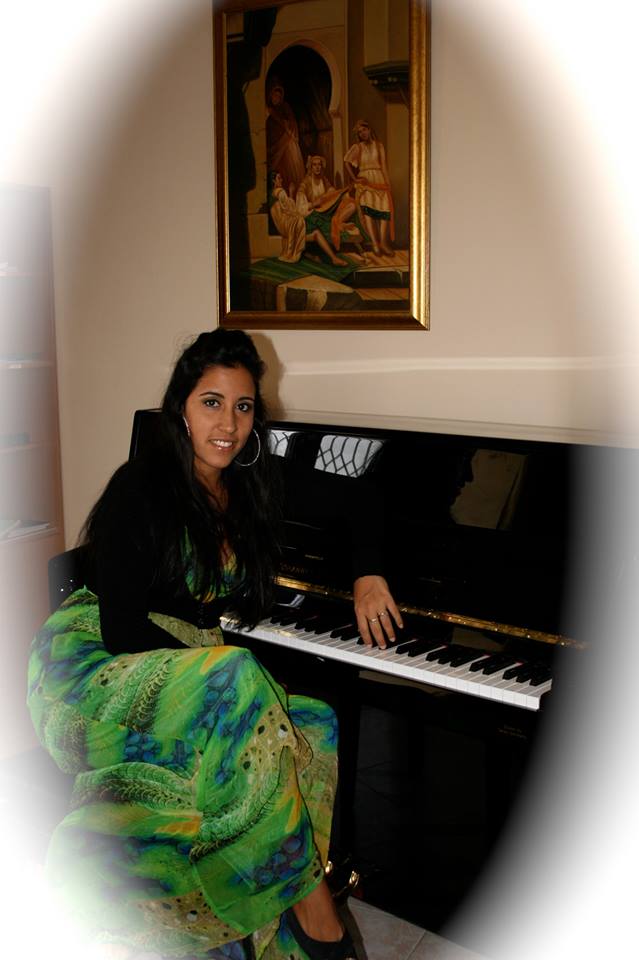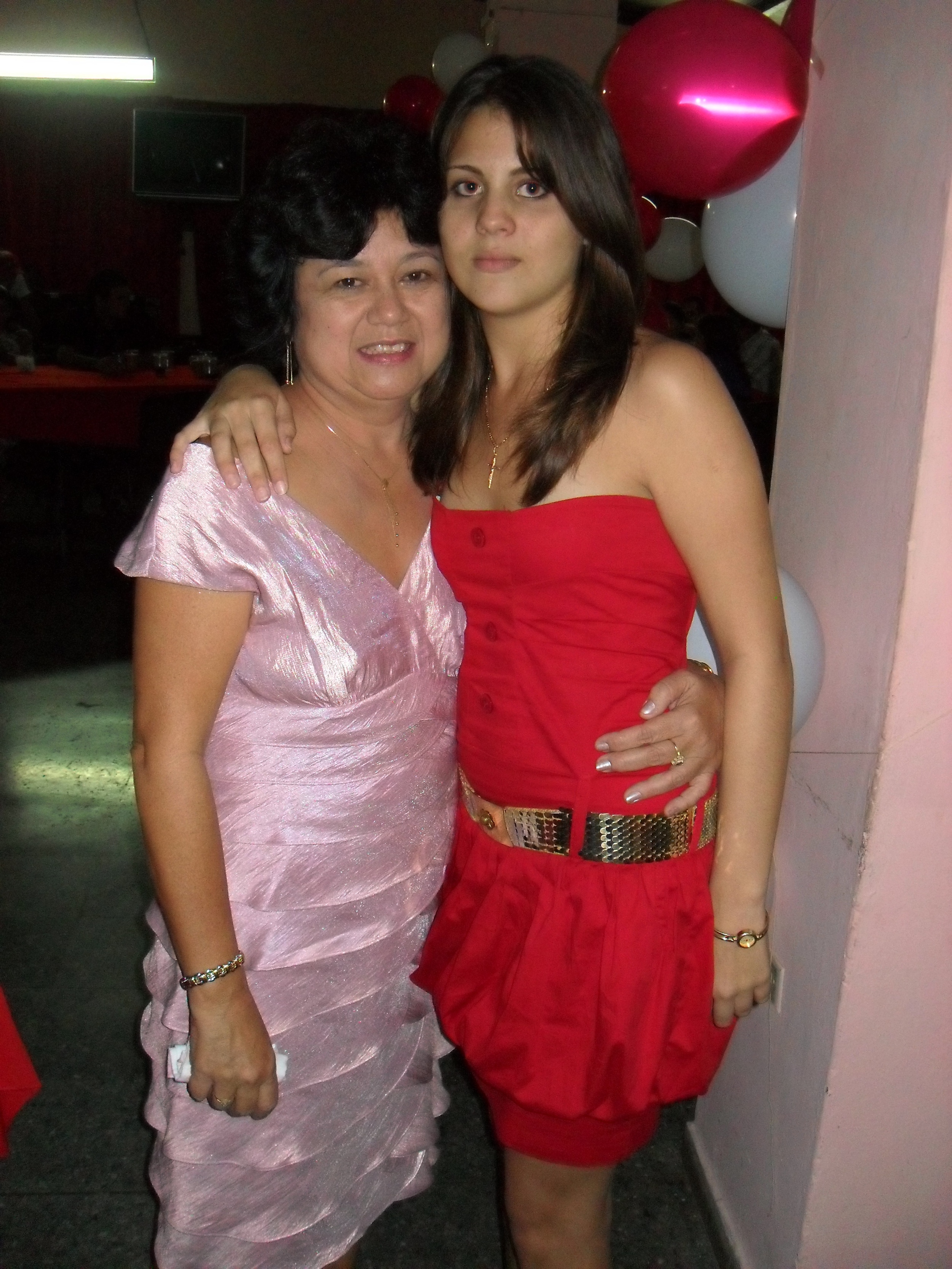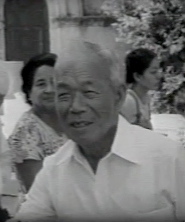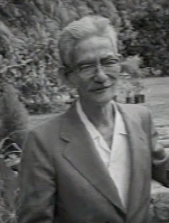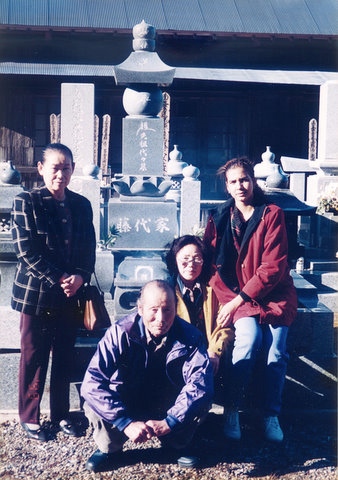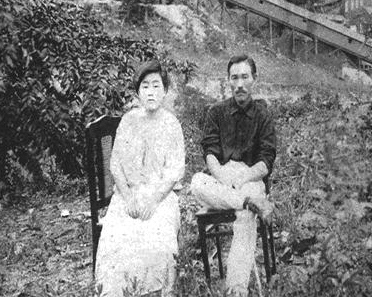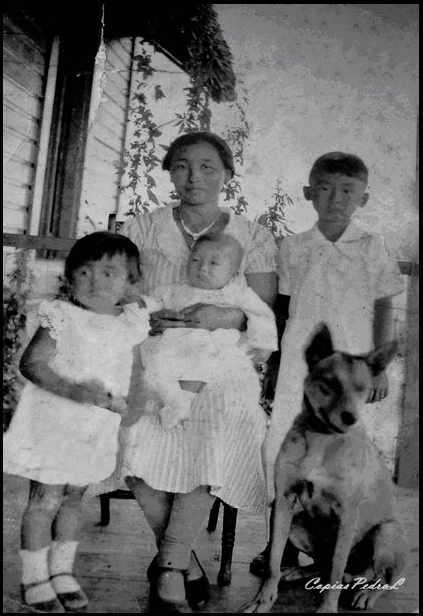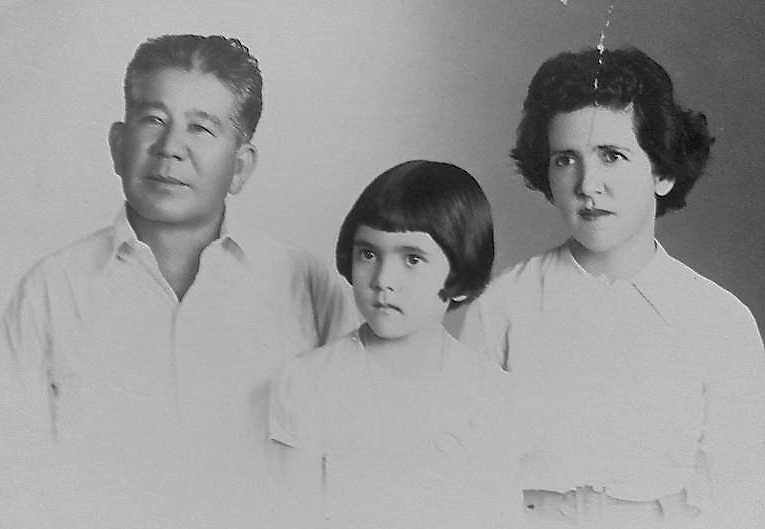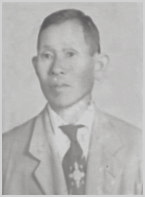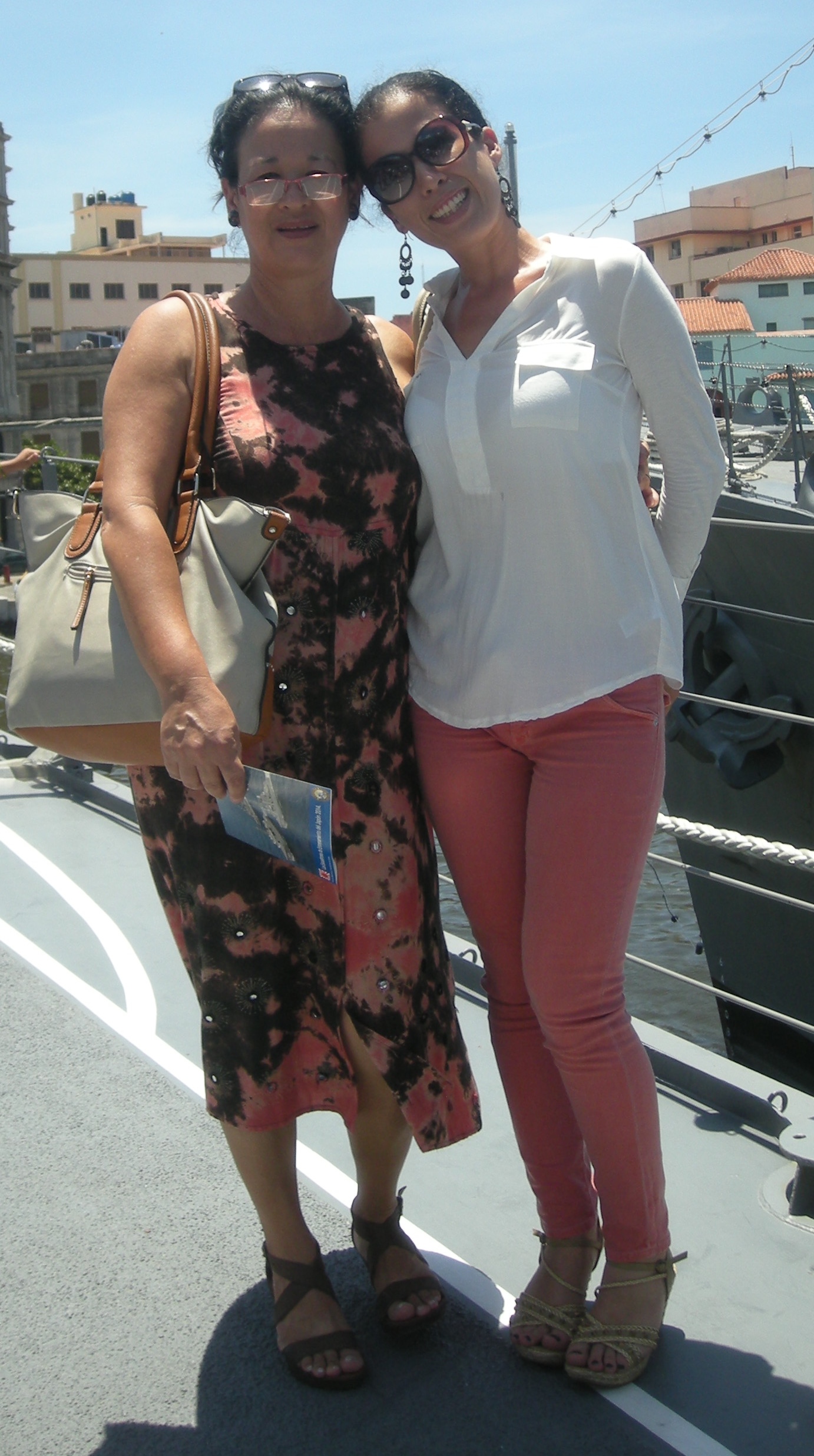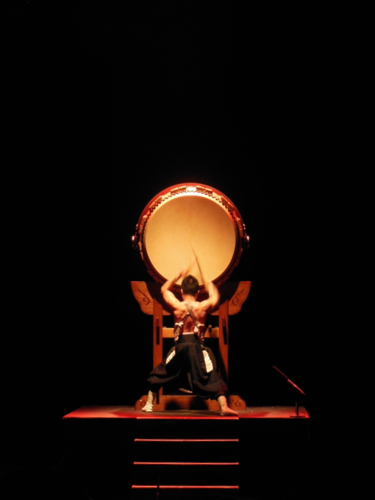Inmigrantes japoneses, Isla de Pinos, 1940. (Japanese Immigrants, Island of Pines, 1940).
Desde sus inicios a mediados del siglo XX, la Sociedad de la Colonia Japonesa de la Isla de la Juventud, Cuba, ha mantenido la tradición del Obon.
"'El O-bon Día de los Muertos es una tradición que tiene lugar 'durante varios días alrededor del 15 de julio, del calendario lunar, cuando, según la creencia popular, las almas de los difuntos retornan a sus antiguos hogares. Las fechas más frecuentes de celebración oscilan en torno al 15 de agosto'. . . .' En Cuba y en especial en la Isla de la Juventud todas las familias japonesas [inmigrantes y descendientes] se reúnen alrededor de esta fecha, preferentemente el domingo más cercano a ella, para que asista la mayor cantidad posible de familiares. Después de visitar el cementerio y ofrecer flores, todos se retiran a un lugar tranquilo para efectuar un gran almuerzo y compartir con la mayor cantidad de sus miembros y se incluye también a personas allegadas, cubanos que por amistad o familiaridad, hacen suya esta tradición desconocida en la cultura occidental. En los primeros años en que se hicieron estas celebraciones, los más jóvenes bailaban con trajes típicos . . . En relación directa con esta tradición, la Sociedad de la Colonia Japonesa de la Isla de Pinos [Isla de la Juventud] realizó una importante obra con la iniciativa del Sr. Tomehachi Kobayachi [¿Kobayashi?] y fue la construcción, en 1951 de la bóveda colectiva japonesa en el Cementerio de Nueva Gerona".
Cita del libro La Sociedad de la Colonia Japonesa de la Isla de la Juventud: 100 años de Tradiciones (p.15-16), escrito por Nancy Oropesa Barceló (Nueva Gerona: Ediciones El Abra, 2005).
En la actualidad, se ha vuelto a revivir el uso de trajes tradicionales japoneses. Esto ha sido posible gracias a donaciones de yukatas (kimonos ligeros de verano) que se le hicieron a la Sociedad de la Colonia Japonesa de la Isla de la Juventud, para sus actividades del Obon y otras que fueran a realizar.
Foto cortesía de Julieta F. Iha y Narryman P. Fonte.
___________________ENGLISH___________________
The Association of the Japanese Colony of the Island of Youth, Cuba, has celebrated the Obon since the Association was created in the mid-20th century.
The O-bon Day of the Deceased is a traditional celebration that takes place ‘around the 15th day of July, in the lunar calendar, when it is believed that the souls of the deceased return home. Nowadays it is usually celebrated around the 15th day of August.’. . . In Cuba, and in the Island of Youth in particular, all Japanese families [of immigrants and descendants] gather around August 15th, preferably on Sunday, since this day guarantees higher attendance. Traditionally, the community visits the cemetery and puts flowers on the families’ graves. Later on they gather for lunch at a quiet place, where they share with other community members and also with Cuban relatives and friends that decide to participate in this tradition. In the first celebrations (back in the mid-20th century), it was customary for young Japanese immigrants to perform dances and wear traditional outfits . . . In 1951, the Japanese Society of the Island of Pines [Island of Youth] built a community vault in Nueva Gerona Cemetery [in the Island of Youth’s capital city], under the guidance of Mr. Tomehachi Kobayachi [Kobayashi?].
The above quote was taken from the book The Association of the Japanese Colony in Cuba’s Island of Youth: 100 Years of Traditions (p.15-16), written by Nancy Oropesa Barceló (Nueva Gerona: Ediciones El Abra, 2005). The author has first-hand experience of many events and people mentioned in her book, because she lives in the Island of Youth and, also, due to her marriage to a nisei.
It is worth mentioning that some traditional Japanese outfits are being currently used for the celebration of Obon, thanks to recent donations of yukatas (light fabric kimonos for summer season). The garments were given to the Association of Japanese Colony of the Island of Youth to contribute to the celebration of Obon, as well as other events.
Photo courtesy of Julieta F. Iha and Narryman P. Fonte.

